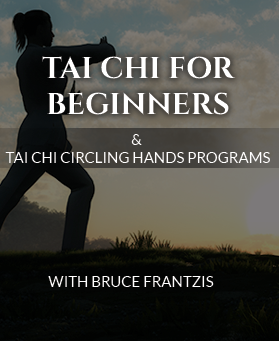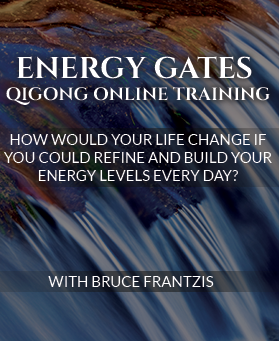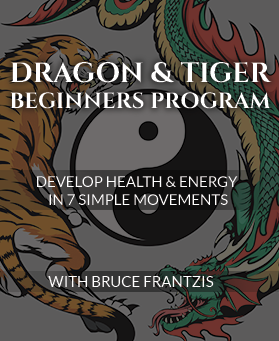A member of the Shibuya tai chi school introduced me to Kenichi Sawai’s hsing-i group, who were fanatics about developing chi through standing practices. Sawai had studied for 10 years in China with Wang Hsiang Zai, founder of the I Chuan School of hsing-i. At the time I was introduced to Kenichi Sawai’s class, it was primarily oriented toward a love of fighting rather than health and fitness.
Many of the students were strong young men of the competitive martial arts scene in Tokyo and were there to seriously learn how to fight. Many were third-, fourth- and fifth-degree black belts in karate. If a man came to Sawai’s group and said he wanted to learn the fighting arts, he was usually tested to see if he was sincere and had a fighting spirit—a characteristic highly valued in the Japanese martial community.
After observing the class for a long time, I underwent the initial formalities that introduced me to the school, including revealing the nature of my previous martial background. I was then asked to spar in order to verify if I was a genuine fighting black belt or merely a dilettante. My first opponent looked grave. When it was mentioned from the sidelines that I was a black belt in karate, Sawai looked toward my sparring partner, who then took a bead on me and began to give me a much harder time.
The next thing I knew, he kicked me in the heart (heart strikes were a specialty of the group). I crumpled to the floor, falling with intense pain and an imminent sense that life would be over very soon. I had never experienced anything like this before in karate. Subsequently, I found out my sparring partner was a ringer. He had been a fifth-degree black belt in karate for years before studying with Sawai.
In a minute or two, someone helped me to my feet. It was extremely difficult to stand and begin breathing normally again. After giving me a little time to recover, they asked me to spar again, this time with a third-degree black belt, which was about my level at that time. In this round, I did just fine, being able to get him fairly often with round kicks to the head. Later, it was explained to me that Sawai just wanted to see if I could go beyond my initial fear and maintain fighting spirit.
After this interesting initiation, I was accepted into the class. It took place in Meiji Jingu Park, which was a major national shrine and the site of Japan’s most important traditional New Year’s event. When I arrived at the class, students were standing in front of trees. Their arms were held up in the air before their chests, as if each person were hugging a huge ball. Some stood with feet shoulder-width apart, body weight evenly placed on the ground.
Others stood on one weighted leg with the heel of the weightless leg slightly raised. This standing ritual was performed for an hour or two before anyone moved, usually with Sawai participating or sometimes walking up to individuals and correcting their postures. After standing, students practiced moving hand techniques—either individually or in groups. In the beginning, each complete step would take about 30 seconds. Progressively, however, as your chi got stronger, one full step with its attendant hand technique could take as much as 10 minutes.
Next, students began Push Hands practice, the object being not only to break your partner’s balance, but afterwards to either hit or apply a fa jin technique, which, unlike the fa jin of tai chi, often delivered quite a shock to the body. Then came free sparring, which was particularly interesting in terms of learning to defend against kicks and throws, as many sparring partners were high-ranking judo and karate black belts.
Sawai himself was a former seventh-degree black belt in judo before his martial studies in China. At the conclusion of the session, the circle completed itself. The class finished with standing to stabilize chi, calm the mind and fully absorb all that had been learned in class.
Sawai’s love of fighting was downright infectious. A former combat veteran, he had a samurai’s serious no-nonsense attitude toward the dance of life and death. He was not a sadist, but would not abide a dabbler’s lack of martial intent and commitment. He assumed his students would settle for nothing less than maximum fulfillment of their martial potential. Sawai could be gruffly playful, but when he got down to business, his manner was severe and very down-to-earth. If you made a mistake in sparring, he would take you to task. After a third failure, he’s correct your mistake, often allowing you to painfully feel what your opponent would do to you—if given the opportunity.
This approach strongly motivated all of us there to rapidly correct our faults. A short, stocky man, Sawai particularly liked Pi Chuan and the Monkey way of moving in hsing-i, especially its blocking methods and its rapid footwork that moved a fighter in and out of range. The offensive technique of which he was particularly fond was a heart strike, which he did both with the back of his wrist Monkey style or with the front of his knuckles, as in the animal form method of Horse. This bent-wrist fist technique mimics a fighting horse crushing its hooves down on its victim after it has stood on its hind legs. As Sawai’s elbow descended vertically, his protruding front four knuckles would come cutting down on your heart.
If Sawai respected your sincere commitment to learning martial arts, he sooner or later applied this technique on you, allowing you to appreciate the nature of a martially induced heart attack. I can personally attest that it made a very real and lasting impression concerning the effectiveness of hsing-i that went deeper than mere words ever could.




0 Comments